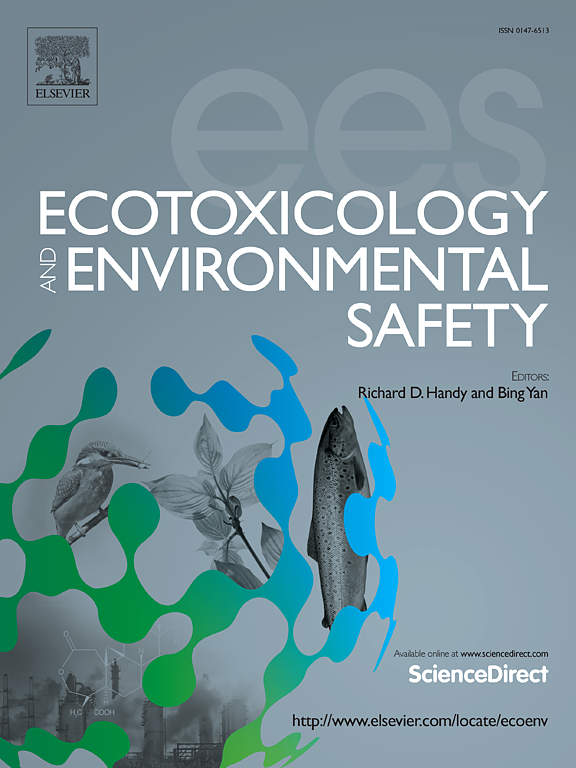Arsenic exposure provoked prostatic PANoptosis by inducing mitochondrial dysfunction in mice and WPMY-1 cells
IF 6.2
2区 环境科学与生态学
Q1 ENVIRONMENTAL SCIENCES
引用次数: 0
Abstract
Inorganic arsenic, a widespread environmental toxicant, significantly contributes to prostate injury. However, the exact cellular mechanisms remain unclear. This study explored the involvement of pyroptosis, apoptosis, and necroptosis (PANoptosis), and their interconnections in arsenic-induced prostate injury. Herein, by employing in vitro (WPMY-1 cells exposed to arsenic for 48 h with or without reactive oxygen species (ROS) and mitochondrial ROS scavenger treatments) and in vivo (C57BL/6 mice were orally gavaged with arsenic and/or N-acetylcysteine for 90 consecutive days) models of arsenic-induced prostate injury and intervention, we demonstrated that sodium arsenite (NaAsO2) triggered mitochondrial damage-activated PANoptosis via the Bax/Bcl-xL/caspase-3/Gasdermin E (GSDME) pathway and the Z-DNA binding protein 1/receptor-interacting protein kinases 1 (RIPK1)/RIPK3/mixed lineage kinase domain-like protein (MLKL) signaling pathway. Notably, treatment with NaAsO2, GSDME, or MLKL knockdown in WPMY-1 cells increased the phenotype of PANoptosis. Mechanistically, the GSDME-N, GSDMD-N, p-MLKL, and cleaved caspase-3 protein levels were increased (1.4-, 2.67-, 3.51-, and 2.16-fold, respectively) in NaAsO2-treated GSDME knockdown WPMY-1 cells, whereas GSDME-N and cleaved caspase-3 protein levels were increased (1.30- and 1.21-fold, respectively) in NaAsO2-treated MLKL knockdown WPMY-1 cells. Our study highlights the crucial role of mitochondrial dysfunction in the initiation of PANoptosis during arsenic-induced prostate injury. Furthermore, we provide novel insights into the connections between apoptosis, pyroptosis, and necroptosis, indicating that GSDME and MLKL proteins may act as crucial regulators and potential therapeutic targets for arsenic-induced PANoptosis.
砷暴露通过诱导小鼠和 WPMY-1 细胞线粒体功能障碍引发前列腺 PAN 凋亡
本文章由计算机程序翻译,如有差异,请以英文原文为准。
求助全文
约1分钟内获得全文
求助全文
来源期刊
CiteScore
12.10
自引率
5.90%
发文量
1234
审稿时长
88 days
期刊介绍:
Ecotoxicology and Environmental Safety is a multi-disciplinary journal that focuses on understanding the exposure and effects of environmental contamination on organisms including human health. The scope of the journal covers three main themes. The topics within these themes, indicated below, include (but are not limited to) the following: Ecotoxicology、Environmental Chemistry、Environmental Safety etc.

 求助内容:
求助内容: 应助结果提醒方式:
应助结果提醒方式:


